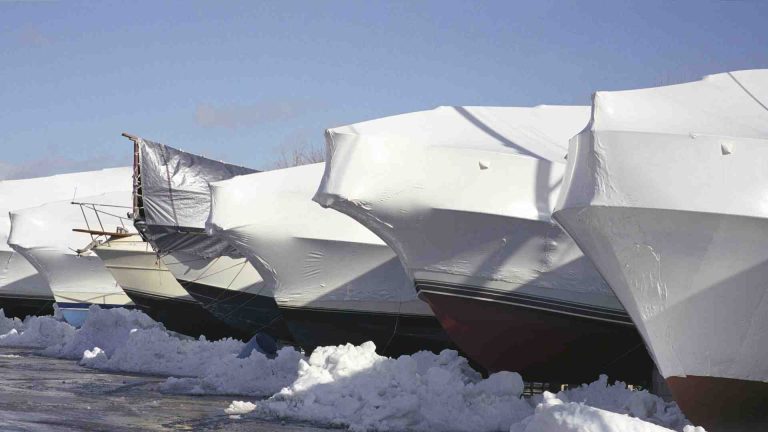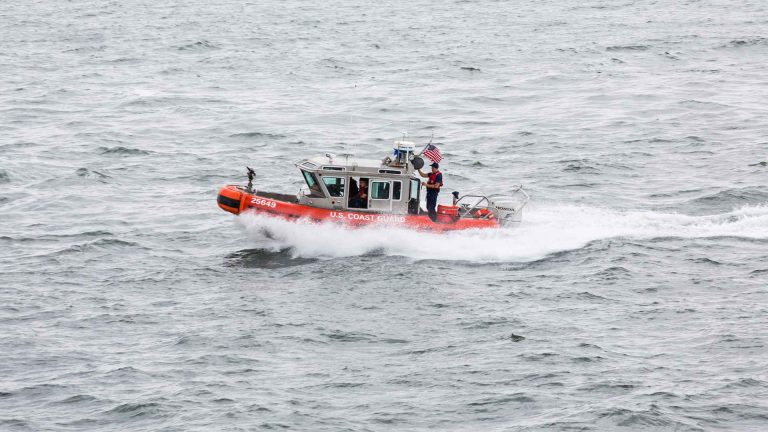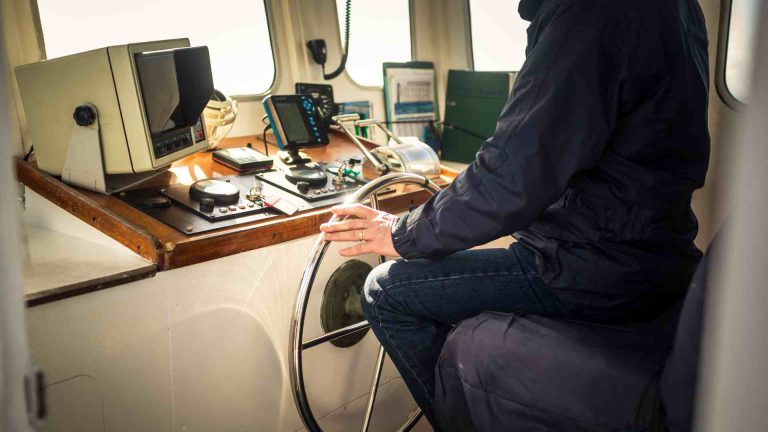Sleeping on a Boat Overnight? How to Prepare
Learn how to prepare for sleeping on a boat overnight with tips on safety, comfort, and gear for a memorable adventure.
Spending a night on a boat, surrounded by the gentle lapping of waves and a starlit sky, is an experience that blends adventure with tranquility. Whether you’re anchored in a serene cove, docked at a marina, or cruising offshore, sleeping on a boat overnight requires careful preparation to ensure safety, comfort, and enjoyment. This comprehensive guide covers everything you need to know to transform potential challenges into a rewarding maritime escapade. From choosing the right location to packing essential gear, we’ll dive into the details to help you prepare for a restful night on the water.
Understanding the Appeal of Sleeping on a Boat
Sleeping on a boat offers a unique way to connect with nature, escape the hustle of land-based life, and maximize the use of your vessel. The gentle rocking of the boat, the sound of water against the hull, and the opportunity to wake up to a sunrise over the horizon create an unparalleled experience. However, without proper planning, concerns about safety, comfort, or seasickness can overshadow the magic. By addressing these concerns proactively, you can ensure a safe and enjoyable night aboard.
This guide is designed for both novice and experienced boaters, covering key considerations such as location selection, anchoring techniques, comfort setup, safety precautions, and essential gear. Whether you’re on a modest pontoon boat or a luxurious yacht, these tips will help you prepare for a memorable overnight adventure.
Choosing the Right Location for Overnight Boating
The location where you choose to spend the night significantly impacts your safety and comfort. Here are the primary options for overnight boating and how to prepare for each:
1. At a Dock or Sandbar
Docking at a marina or pulling up to a sandbar offers stability, making it easier to sleep without worrying about the boat’s movement. Docks provide access to amenities like restrooms, showers, and electricity, which can enhance comfort, especially on smaller boats without onboard facilities. Sandbars, on the other hand, offer a more rustic experience, often requiring you to sleep on deck or under a canopy.
Preparation Tips:
- Check Facilities: If docking, confirm the availability of restrooms, showers, and power hookups. Some marinas require reservations, so plan ahead.
- Weather Protection: On a sandbar, prepare for rain, dew, or insects by setting up a canopy or pop-up tent. Pack mosquito netting or repellent for comfort.
- Temperature Considerations: Water can amplify cooler temperatures, even in warm climates. Pack extra blankets or warm clothing for chilly nights.
- Noise Awareness: Docks may have nearby boat traffic or marina activity, while sandbars may expose you to natural sounds like insects or waves. Earplugs can help mitigate disturbances.
2. At Anchor in a Cove or Inlet
Anchoring in a protected cove or inlet provides a serene, secluded experience, with the gentle rocking of the boat often promoting restful sleep. However, proper anchoring is critical to prevent drifting into hazards like rocks, shallow waters, or other vessels.
Preparation Tips:
- Select a Protected Spot: Choose a cove or inlet sheltered from wind and waves. Use nautical charts or apps like Navionics to identify suitable locations.
- Anchor Securely: Select the right anchor for the seabed (e.g., fluke anchors for sand, plow anchors for mud). Use a scope ratio of 5:1 to 7:1 (line length to water depth) to ensure the anchor holds.
- Set an Anchor Alarm: A GPS-based anchor alarm, such as those available on apps like Anchor Pro, alerts you if the boat drifts beyond a set radius.
- Respect Anchoring Etiquette: Maintain a safe distance from other boats, avoid running generators late at night (typically after 10 PM), and keep noise levels low.
3. Offshore While Underway
For long-distance cruising, such as on a sailboat or motor yacht, sleeping offshore involves managing watches while the boat is in motion. This scenario is common for multi-day passages where crew members rotate between steering, resting, and other tasks.
Preparation Tips:
- Secure Sleeping Arrangements: Use a berth with a lee cloth or pillows to prevent rolling out of bed during tacks or rough seas.
- Rotating Watches: If traveling with a crew, establish a watch schedule (e.g., 2-4 hour shifts) to ensure someone is always monitoring the boat. Solo sailors can use 20-30 minute naps with alarms to check the horizon.
- Safety Gear: Ensure life jackets, harnesses, and tethers are accessible, especially in rough conditions. Secure loose items to prevent them from becoming hazards.
Safety First: Preparing Your Boat for Overnight Stays
Safety is paramount when sleeping on a boat, as the marine environment can be unpredictable. Proper preparation of your vessel and adherence to safety protocols can prevent accidents and ensure peace of mind.
Pre-Trip Safety Checks
Before setting out, conduct a thorough inspection of your boat to confirm it’s in top condition:
- Engine and Systems: Verify that engines, fuel systems, and electronics (e.g., GPS, VHF radio) are functioning properly.
- Navigation Lights: Ensure all navigation lights are operational for visibility at night.
- Leak Inspection: Check for leaks in the hull, plumbing, or fuel systems. Address any issues before departure.
- Safety Equipment: Confirm the presence of life jackets, fire extinguishers, flares, a first-aid kit, and a marine VHF radio.
Anchoring Techniques
Proper anchoring is critical to prevent drifting while you sleep. Here’s a step-by-step guide:
- Choose the Right Anchor:
- Fluke Anchor: Ideal for sandy or muddy bottoms.
- Plow Anchor: Suitable for mixed or grassy bottoms.
- Mushroom Anchor: Best for permanent moorings in soft bottoms.
- Calculate Scope:
- Use a scope ratio of 5:1 to 7:1 (e.g., for 10 feet of water depth, deploy 50-70 feet of anchor line).
- In stormy conditions, increase the scope to 10:1 for added security.
- Set the Anchor:
- Lower the anchor slowly to the seabed, then reverse the boat gently to dig it in.
- Monitor the anchor’s hold by checking for drag using GPS or visual landmarks.
- Use an Anchor Alarm:
- Set a GPS anchor alarm to alert you if the boat moves beyond a predefined radius (e.g., 50 feet).
Chart: Anchoring Process
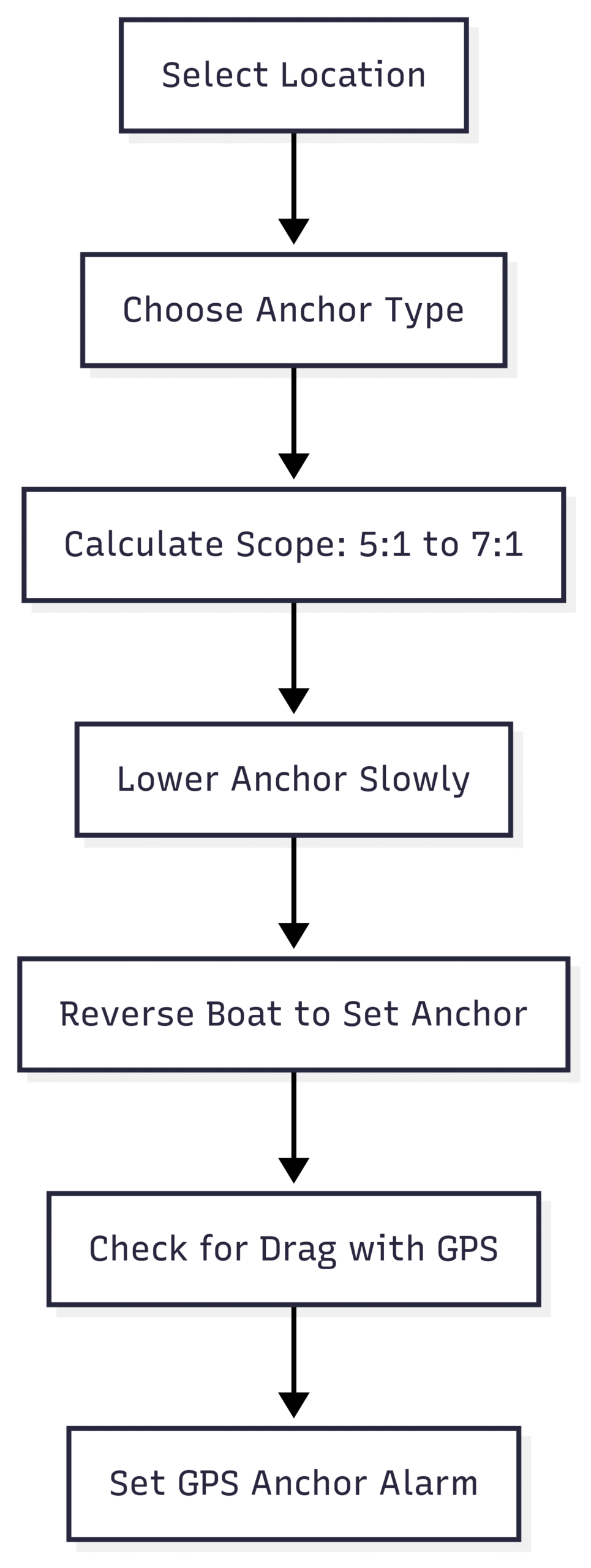
Additional Safety Precautions
- Inform a Contact: Share your itinerary, including your planned location and return time, with a trusted person onshore.
- Monitor Weather: Check forecasts for wind, waves, and storms using apps like Windy or NOAA Weather. Avoid anchoring in exposed areas during inclement weather.
- Secure Loose Gear: Stow items like trash bags, books, or equipment to prevent them from rolling or falling overboard.
- Restrict Mobility for Kids and Pets: Ensure children and pets are secured to prevent falls or injuries while you sleep.
Creating a Comfortable Sleep Environment
Comfort is key to a restful night on a boat, whether you’re sleeping in a cabin or on deck. The boat’s motion, temperature, and potential for noise or insects can disrupt sleep if not addressed.
Sleeping Arrangements
The type of boat determines your sleeping setup:
- Cabin Sleeping: Cabins offer shelter from the elements but can feel cramped or stuffy. Ensure proper ventilation by opening hatches or using fans. Use privacy curtains or screens in shared cabins.
- Deck Sleeping: Sleeping under the stars is romantic but requires protection from weather and insects. Set up a pop-up tent or canopy and use mosquito netting.
Recommended Gear:
- Sleeping Bag: Choose a waterproof, windproof sleeping bag rated for the expected temperature (e.g., 20°F for cooler climates, 40°F for warmer areas).
- Inflatable Pillow: Compact and comfortable for tight spaces.
- Air Mattress or Pad: For added cushioning, especially on hard decks or berths.
- Earplugs and Eye Masks: Block out noise from waves or creaking and light from the moon or nearby boats.
Managing Seasickness
Seasickness can ruin an otherwise pleasant night. The constant motion of the boat, especially in choppy waters, can cause nausea and discomfort. To mitigate this:
- Medications: Over-the-counter options like Dramamine or Bonine can prevent seasickness. Take them 30-60 minutes before departure.
- Natural Remedies: Ginger capsules, acupressure wristbands, or peppermint tea can help alleviate symptoms.
- Positioning: Sleep in the center of the boat, where motion is minimized, and face the direction of travel if possible.
Maintaining Hygiene
Hygiene can be challenging on a boat, especially without onboard facilities. Here’s how to stay clean:
- Portable Toilet: A camping toilet (e.g., Thetford Porta Potti, priced at $100-$150) is compact and practical for small boats.
- Biodegradable Wipes: Use water-friendly wipes for quick cleanups.
- Solar Shower: A portable solar shower (e.g., Advanced Elements 5-Gallon Solar Shower, $30-$40) heats water using sunlight for bathing.
- Sanitation Supplies: Pack toilet paper, hand sanitizer, and a small waste bin.
Table: Hygiene Gear for Overnight Boating
| Item | Purpose | Price Range | Recommended Brand |
|---|---|---|---|
| Portable Toilet | Waste management | $100-$150 | Thetford Porta Potti |
| Biodegradable Wipes | Quick cleanups | $5-$15 | Sea to Summit Wipes |
| Solar Shower | Bathing | $30-$40 | Advanced Elements |
| Hand Sanitizer | Hygiene | $2-$5 | Purell |
Essential Gear for Overnight Boating
Packing the right gear ensures you’re prepared for both comfort and emergencies. Here’s a comprehensive list of essentials:
Sleeping and Comfort Gear
- Bedding: Sleeping bags, blankets, or sheets tailored to the climate.
- Ventilation: Portable fans or open hatches for air circulation.
- Mosquito Protection: Netting, screens, or repellents like OFF! Deep Woods ($8-$12).
Safety and Navigation Gear
- Flashlights/Headlamps: Rechargeable options like the Black Diamond Spot ($40-$50) for nighttime navigation.
- Extra Batteries: For all electronic devices.
- Navigation Lights: Ensure compliance with Coast Guard regulations.
- First-Aid Kit: A compact marine first-aid kit (e.g., Adventure Medical Kits Marine 100, $30-$40).
- Marine VHF Radio: For communication and emergencies (e.g., Standard Horizon HX890, $200-$250).
Food and Hydration
- Camping Stove: A compact stove like the Jetboil Flash ($100-$130) for cooking meals.
- Portable Cooler: A soft-sided cooler (e.g., Yeti Hopper Flip, $200-$250) for keeping food and drinks cold.
- Water Supply: At least 1 gallon per person per day for drinking and cooking.
- Pre-Prepared Meals: Pack easy-to-eat meals like sandwiches, salads, or freeze-dried camping meals.
Table: Essential Gear for Overnight Boating
| Category | Item | Price Range | Purpose |
|---|---|---|---|
| Safety | Marine VHF Radio | $200-$250 | Communication, emergencies |
| Safety | First-Aid Kit | $30-$40 | Medical emergencies |
| Comfort | Sleeping Bag | $50-$150 | Sleeping warmth |
| Cooking | Camping Stove | $100-$130 | Meal preparation |
| Navigation | Headlamp | $40-$50 | Nighttime visibility |
Coping with Noise and Privacy
Boats amplify sounds, from water lapping against the hull to creaking rigging or marine life. These noises can be soothing for some but disruptive for others. Privacy can also be challenging, especially on smaller boats or with multiple people aboard.
Managing Noise
- Noise-Canceling Headphones: Options like Bose QuietComfort ($200-$300) can block out ambient sounds.
- White Noise Machine: A portable device (e.g., Marpac Dohm, $40-$50) can mask disruptive noises.
- Earplugs: Foam earplugs ($5-$10) are a budget-friendly alternative.
Ensuring Privacy
- Pop-Up Tent: For deck sleeping, a lightweight tent (e.g., Coleman Pop-Up Tent, $80-$100) creates a private space.
- Privacy Curtains: In cabins, hang lightweight curtains to divide shared spaces.
- Eye Masks: Block out light and enhance the sense of personal space.
Connectivity and Entertainment
Staying connected and entertained enhances the overnight experience, especially in remote areas.
- Marine VHF Radio: Essential for safety and communication with other vessels or authorities.
- Portable Wi-Fi: A device like the GlocalMe G4 Pro ($150-$200) provides internet access in areas with cellular coverage.
- Satellite Phone: For offshore trips, a satellite phone (e.g., Iridium 9555, $1,000-$1,500) ensures connectivity beyond cell range.
- Entertainment: Pack books, card games, or a portable speaker (e.g., JBL Clip 4, $50-$70) for music. Rechargeable LED lanterns ($20-$30) create a cozy atmosphere.
Final Preparations: Weather and Route Planning
Before embarking on your overnight adventure, double-check the weather and plan your route meticulously:
- Weather Forecast: Use reliable sources like NOAA Weather or Windy to monitor wind, waves, and storm risks. Avoid exposed anchorages during strong winds or storms.
- Route Planning: Study nautical charts for your route, noting hazards like shallow waters, rocks, or heavy traffic areas. Apps like Navionics or Garmin ActiveCaptain can assist.
- Tides and Currents: Account for tidal changes, especially in coastal areas, to avoid grounding or anchor drag.
- Marine Life Awareness: Research local marine life (e.g., jellyfish, sharks) and know how to respond if encountered.
Chart: Pre-Trip Checklist
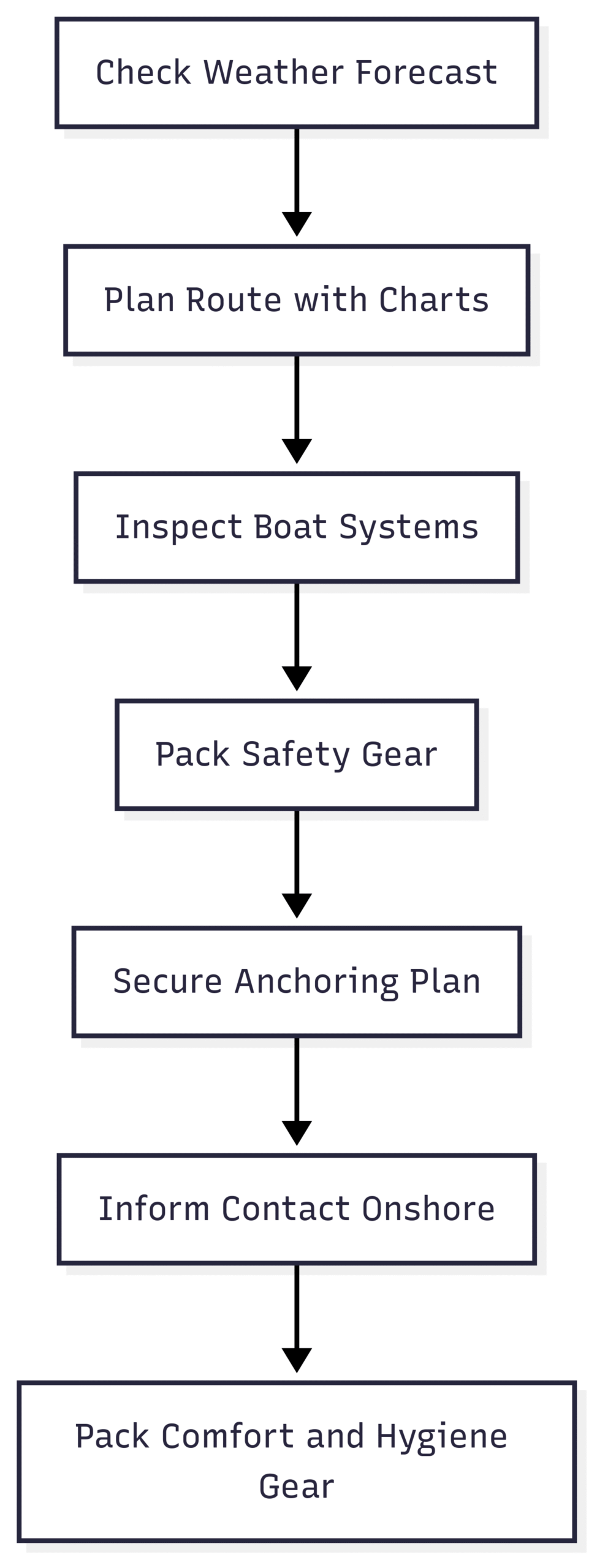
Choosing the Right Boat for Overnight Sleeping
The type of boat you use significantly affects your overnight experience. Here’s a comparison of common boat types for sleeping:
Table: Boat Types for Overnight Sleeping
| Boat Type | Sleeping Setup | Amenities | Price Range (New) |
|---|---|---|---|
| Pontoon Boat | Deck with canopy or tent | Limited (portable toilet) | $20,000-$50,000 |
| Sailboat | Cabin with berths, lee cloths | Moderate (toilet, galley) | $50,000-$200,000 |
| Motor Yacht | Luxury cabins, full amenities | High (bathroom, kitchen) | $100,000-$1,000,000+ |
| Cabin Cruiser | Small cabin with berth | Moderate (toilet, small galley) | $30,000-$150,000 |
For those looking to customize a boat for overnight adventures, tools like Scout Boats’ “Build Your Scout” allow you to design a vessel tailored to your needs, with options for comfortable cabins and ample storage.
Tips for a Memorable Overnight Boating Experience
To maximize enjoyment and minimize stress, keep these top tips in mind:
- Treat It Like Camping: Approach overnight boating with the mindset of a camping trip, packing versatile gear for various conditions.
- Prepare Meals in Advance: Save time by prepping meals like sandwiches or salads to enjoy without cooking onboard.
- Moderate Alcohol Consumption: Ensure everyone drinks responsibly to maintain safety, especially at night.
- Embrace the Experience: The gentle rocking, glowing phosphorescence, and sounds of marine life create a unique atmosphere. Relax and enjoy the moment.
Conclusion: Ready for Your Overnight Boating Adventure
Sleeping on a boat overnight is a rewarding way to deepen your connection with the water and create lasting memories. With careful planning—choosing a safe location, anchoring securely, packing essential gear, and preparing for comfort—you can transform potential challenges into a delightful experience. Whether you’re seeking the rustic charm of a sandbar, the solitude of an anchored cove, or the thrill of an offshore passage, these tips ensure you’re ready for a safe and restful night aboard.
Embrace the call of the sea, and let the gentle waves lull you into a night of adventure and tranquility. With the right preparation, sleeping on a boat can be as comfortable as it is unforgettable.
Happy Boating!
Share Sleeping on a Boat Overnight? How to Prepare with your friends and leave a comment below with your thoughts.
Read 6 Essential Safety Skills Every New Boater Needs to Know until we meet in the next article.


